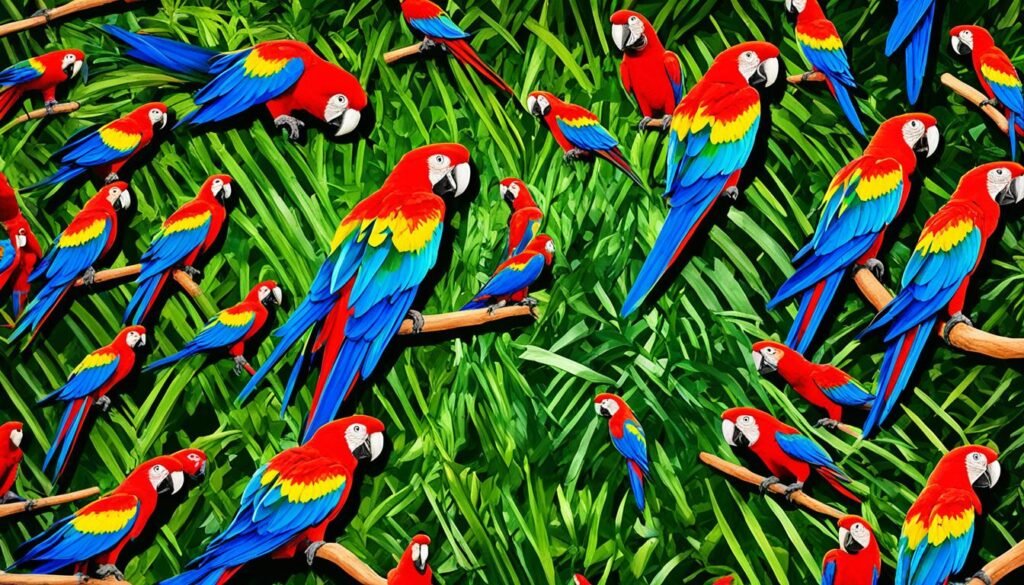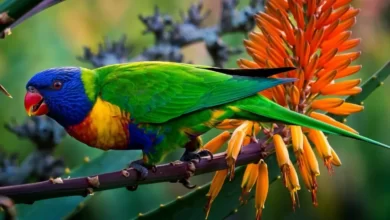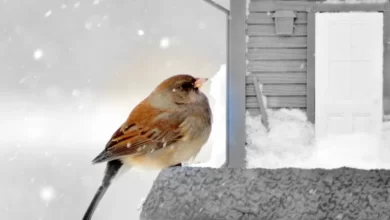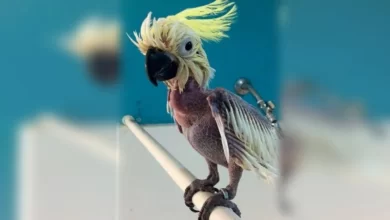Discover Parrots Of South America: Vibrant Species
Ever wondered about the colorful world of parrots in South America? These birds, from the big macaws to the small conures, are important in the region’s culture and stories. Get ready for an amazing journey into the world of parrots that live in the Americas.
South America is home to many parrot species that amaze us with their bright colors and interesting ways. With over 3,481 bird species, it’s the place with the most birds. These birds live in many places, from dense rainforests to cities.
Let’s dive into the world of Parrots Of South America. You’ll meet the big macaws, the talking amazons, and the tiny conures. Each parrot has its own special traits and cultural importance. Join us to learn about their amazing stories and why people love them.
Stunning Diversity: Types of Parrot Species Found in the Americas
The Americas, especially South and Central America, are home to many parrot species. These colorful birds are loved by birdwatchers and nature fans for their beauty and interesting ways.
The Majestic Macaws: Rainbows in the Sky
Macaws shine with their bright red, blue, and yellow feathers. Birds like the Scarlet Macaw and the Blue and Yellow Macaw live in the Americas’ lush rainforests. They fly high, showing off their beauty.
Amazon Parrots: Feathered Chatterboxes
Amazon parrots are known for talking like humans. They have green, yellow, and red feathers. The Yellow-headed Amazon and the Blue-fronted Amazon are loved for their smartness and fun personalities.
Conures: Miniature Gems of the Forest
Conures, with their bright colors, are smaller but just as beautiful. The Sun Conure stands out with its orange and yellow feathers.
The Americas have many parrot species, each unique. From the big macaws to the small conures, these birds show the beauty of the Americas.
| Parrot Species | Native Range | Key Features |
|---|---|---|
| Scarlet Macaw (Ara macao) | Costa Rica, Panama, Colombia, Ecuador, Peru, Bolivia, Brazil, Mexico, Nicaragua | Vibrant red, yellow, and blue plumage; one of the largest macaw species |
| Blue and Yellow Macaw (Ara ararauna) | Central and South America, including Brazil, Peru, Bolivia, and Paraguay | Striking blue and yellow feathers; known for their loud, raucous calls |
| Yellow-headed Amazon (Amazona oratrix) | Mexico, Guatemala, Belize | Distinctive yellow head and green body; renowned for their ability to mimic speech |
| Blue-fronted Amazon (Amazona aestiva) | Bolivia, Brazil, Paraguay, Argentina | Green plumage with a blue forehead and cheeks; highly intelligent and social parrots |
| Sun Conure (Aratinga solstitialis) | Northeast Brazil | Vibrant orange and yellow plumage; active and playful parrot species |
Cultural Significance: Parrots in Native American Traditions
Parrots have been important in the cultures of Native American tribes for a long time. They were seen as sacred birds, with their bright feathers used in ceremonies. The tribes believed parrots, especially macaws, were messengers between the world and the spiritual realm.
The Mayan and Aztec civilizations also loved parrots. They valued them for their beauty and saw them in myths and art. Parrots symbolized fertility, rain, and life’s colors. Today, parrots still stand for freedom, diversity, and protecting the environment in the Americas.
Over 2,000 years ago, the Nazca culture made amazing geoglyphs, including a parrot that looks best from above. In the American Southwest, rock art shows birds like Amazon parrots and macaws from far away, showing trade routes.
Native American tribes prized feathers from Mexican macaws for decorations and spiritual items. These feathers stood for rainbows and corn. They made «prayer sticks» and «Corn Mother» fetishes with them.
In South America, parrot feathers went into headdresses. Tribes believed these feathers gave spiritual strength and protection. The Mayan Creation Myth tells of parrots in the rebirth of new beings.
Parrots are in stories from many cultures, like England, Switzerland, France, Egypt, and Mongolia. They’re big in art and music too.
Venezuela and Colombia have parrot festivals every year to help save these birds. World Parrot Day, on May 31st, also aims to protect parrots in the wild and in homes.
Parrots aren’t native to North America north of Mexico, but they became big in Southwestern Native American culture. Trade networks brought parrot feathers and birds far from their home. In the Anasazi civilization, parrots, like macaws and Amazon parrots, were popular pets.
The Hopi tribe sees a Parrot kachina as a divine spirit, linking parrots to the south and fertility. Parrots are clan animals for the Hopi, Zuni, and other Pueblo tribes. Many Pueblos have a Parrot Dance in their traditions.
There are stories and legends about Parrot Gods and Spirits in Native American traditions. The Kyash Kachina from the Hopi tribe is one example. South American Flood Myths and stories about the Mishongnovi Clans also feature parrots.
Non-native Parrot Colonies in Urban Landscapes
Parrots are not just found in the wild. Some have made cities like New York, San Francisco, and Miami their homes. The Monk Parakeet, from South America, is one such bird. It has settled in city parks and backyards, bringing a bit of the wild to urban areas.
Peach-faced Lovebirds in Arizona
In Arizona, the peach-faced Lovebird has found a new home. These parrots, from Africa, have thrived in the wild. They were either set free or escaped, bringing joy to locals and bird lovers with their bright colors and friendly nature.
Now, these non-native parrots are a part of the community. People celebrate them with art, events, and tours. Over 56 parrot species have been spotted in 43 states, with 25 now breeding in the wild. The Monk Parakeet is a big success in cities, living in at least 21 states.
Other parrots like the Red-Crowned Parrot and Nanday Parakeet have also made cities their home. They live in states like Texas, California, and Florida. But, their arrival has raised some concerns. Some worry they might harm native birds or crops.
Yet, many cities welcome these urban wildlife friends. They see the beauty and joy they bring. So, they’ve learned to live with them, celebrating their place in the city.
Parrots as Beloved Companion Pets
In the Americas, parrots have become cherished pets in many homes. These smart and social birds, from the big macaws to the small budgerigars, are loved for their lively parrot personalities. Owners often talk about the strong bonds they have with their parrots. They admire the birds’ empathy, smarts, and ability to connect emotionally.
Personality and Bond with Humans
Parrots can form deep emotional ties with people thanks to their sharp minds and social nature. Species like the African grey and Amazon parrot are famous for mimicking human speech and understanding their owners’ feelings. This bond makes parrot ownership rewarding, making the parrot a key family member.
Responsibilities and Considerations
But, parrots need a lot of care and attention as pets. They require the right food, lots of exercise, and social time. Some parrots can live for decades, so owning one means a big commitment. If not cared for well, parrots might make noise or have behavioral problems. Still, many Americans love parrots for their companionship and the lessons they teach about responsibility.
In the U.S., about 8 million parrots are kept as pets, making them the 3rd most popular pet. Popular species include African greys, macaws, cockatoos, budgies, and lovebirds. The rise in parrot pet popularity has led to the creation of the Association of Avian Veterinarians in the 1980s. Now, there’s more specialized care and info available.
| Parrot Species | Personality Traits | Lifespan | Recommended Care |
|---|---|---|---|
| African Grey | Intelligent, Affectionate, Vocal | 40-60 years | Requires Ample Interaction, Enrichment, and Specialized Diet |
| Macaw | Playful, Energetic, Loudly Vocal | 30-50 years | Needs Large Cage, Plenty of Toys, and Dedicated Time |
| Cockatoo | Affectionate, Cuddly, Demanding | 40-60 years | Requires Experienced Owner, Lot of Handling, and Potential for Behavioral Issues |
The Plight of Endangered Parrot Species
Parrots add color and charm to the Americas, but many face big threats and could soon go extinct. Habitat loss, deforestation, and the illegal pet trade are major issues for endangered parrot species. Birds like the Spix’s Macaw and the Puerto Rican Amazon are in danger, with fewer birds in the wild.
There’s a growing effort to save these endangered parrots. Government and non-government groups are working to protect their homes, release captive birds, and stop illegal trading. Sanctuaries and zoos help by breeding birds and teaching people about their plight. Local communities are also helping by protecting and restoring habitats, showing the power of working together.
| Endangered Parrot Species | Conservation Efforts |
|---|---|
| Spix’s Macaw | Successful reintroduction efforts by the Association for the Conservation of Threatened Parrots (ACTP) in Brazil |
| Kakapo | Monitored and supported in its recovery by the New Zealand Department of Conservation (DOC) |
| Puerto Rican Amazon | Positive trends due to captive breeding and release programs led by the U.S. Fish and Wildlife Service (USFWS) |
| Orange-bellied Parrot | Efforts to reverse the decline of the critically low wild population by BirdLife Australia |
| Philippine Cockatoo | Protected against illegal trade and habitat destruction by the Katala Foundation in the Philippines |
To save all parrots, we must protect their rainforest homes and stop taking them for the pet trade. It’s best not to buy parrots from shops unless they’re from reputable breeders. This helps keep wild populations safe.
Parrots Of South America: A Kaleidoscope of Species
The Amazon rainforest in South America is full of parrot species. These birds are known for their bright colors and interesting ways of living. Brazil is home to many rare birds that live only there and have special ways to survive.
The Hyacinth Macaw is the biggest parrot in the world, and the Brazilian Ruby and Black-eared Fairy are tiny but shine like jewels. These parrot species show how diverse the birds in South America are. Each one adds to the area’s rich bird life and helps protect these amazing birds.
| Parrot Species | Key Facts |
|---|---|
| Hyacinth Macaw | The largest parrot in the world, found in the Amazon rainforest of Brazil. |
| Brazilian Ruby | A small, iridescent hummingbird species endemic to Brazil. |
| Black-eared Fairy | Another tiny, jewel-like hummingbird species found in South America. |
South America is a paradise for bird lovers, with many parrot species to see. From the big macaws to the tiny hummingbirds, these birds make the Amazon rainforest and other places special. They are a kaleidoscope of endemic birds we need to keep safe for the future.

From Rainforest to Backyard: Parrot Habitats in the Americas
Parrots in the Americas live in many places, from the Amazon’s lush rainforests to big city streets. In South and Central America, they love the dense forests. They eat fruits, seeds, and flowers there. Birds like the Scarlet Macaw and the Amazon Parrot live high up, enjoying the forest’s food and shelter.
But parrots aren’t just in the wild. They’ve made homes in cities too, like New York and Arizona. The Monk Parakeets in New York and the peach-faced Lovebirds in Arizona show how well they adapt. These parrot habitats in backyards bring a bit of the wild to city life.
Parrots are very good at changing their homes to fit their needs. This shows how strong and flexible they are, even when their wild homes change. Their ability to live in different places shows how well they can adapt to a changing world.
| Parrot Species | Typical Habitat | Adaptability |
|---|---|---|
| Scarlet Macaw | Tropical rainforests | Highly specialized, dependent on intact forest ecosystems |
| Amazon Parrot | Tropical rainforests | Moderately adaptable, can thrive in fragmented forests and urban areas |
| Monk Parakeet | Urban areas, parks, and suburbs | Highly adaptable, able to live in close proximity to humans |
| Peach-faced Lovebird | Urban areas, parks, and backyards | Highly adaptable, can thrive in warm, arid climates |
Parrots in the Americas show how strong and flexible they are. They live in both the rainforest and urban landscapes. These birds amaze and inspire us. They remind us of nature’s beauty and the need to live with these birds in our backyards and beyond.
The Parrot’s Place in Art and Folklore
Parrots have a special spot in the art and stories of the Americas. They show the deep cultural importance of these colorful birds. In the art of indigenous peoples, the parrot, especially the big macaw, is very important.
Their bright feathers were used in special clothes and rituals. They symbolized the sun’s power, life’s energy, and the link between the world and the spiritual world.
Iconic Representations in Native Art
Parrots are also shown in native art, like in weavings and carvings. These show how much the indigenous cultures admired these birds. They saw parrots as messengers, symbols of fertility, and beauty of nature.
The parrot’s role in parrots in art and parrots in folklore is clear in native art and cultural symbolism. In Mayan myths and Indian stories, parrots are linked to fertility and love. They are seen as powerful symbols of nature’s beauty and spiritual ties between humans and the divine.
Today, the parrot’s role in the art and stories of the Americas is still celebrated. Artists like Nicholas G. Padilla mix their heritage with music, talking about themes like imperialism and identity. The exhibit «Parrots in the Kiln» in Miami’s Design District showed how parrots symbolize the threat of climate change in South Florida.
Conservation Efforts to Protect South American Parrots
Endangered parrots in the Americas have caught the world’s eye, leading to a push to save them. Conservation groups, both big and small, are working hard. They aim to protect parrot habitats, fight against the illegal pet trade, and help captive birds return to the wild.
Wildlife sanctuaries and zoos are key in these efforts. They help with breeding programs and teach people about the parrots’ struggles. Local communities are also joining in, working to restore and protect the parrots’ natural homes.
The story of endangered parrots shows how delicate nature is and how urgent conservation is. By working together, we can save these amazing birds. This also helps keep the Americas’ unique culture and nature safe.





